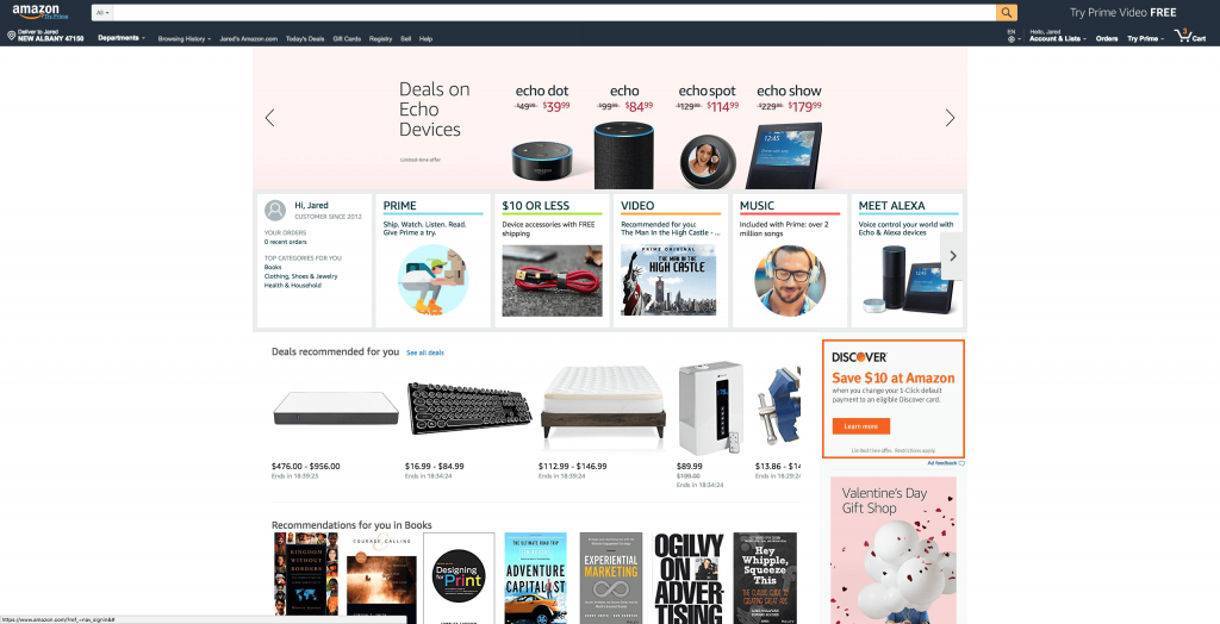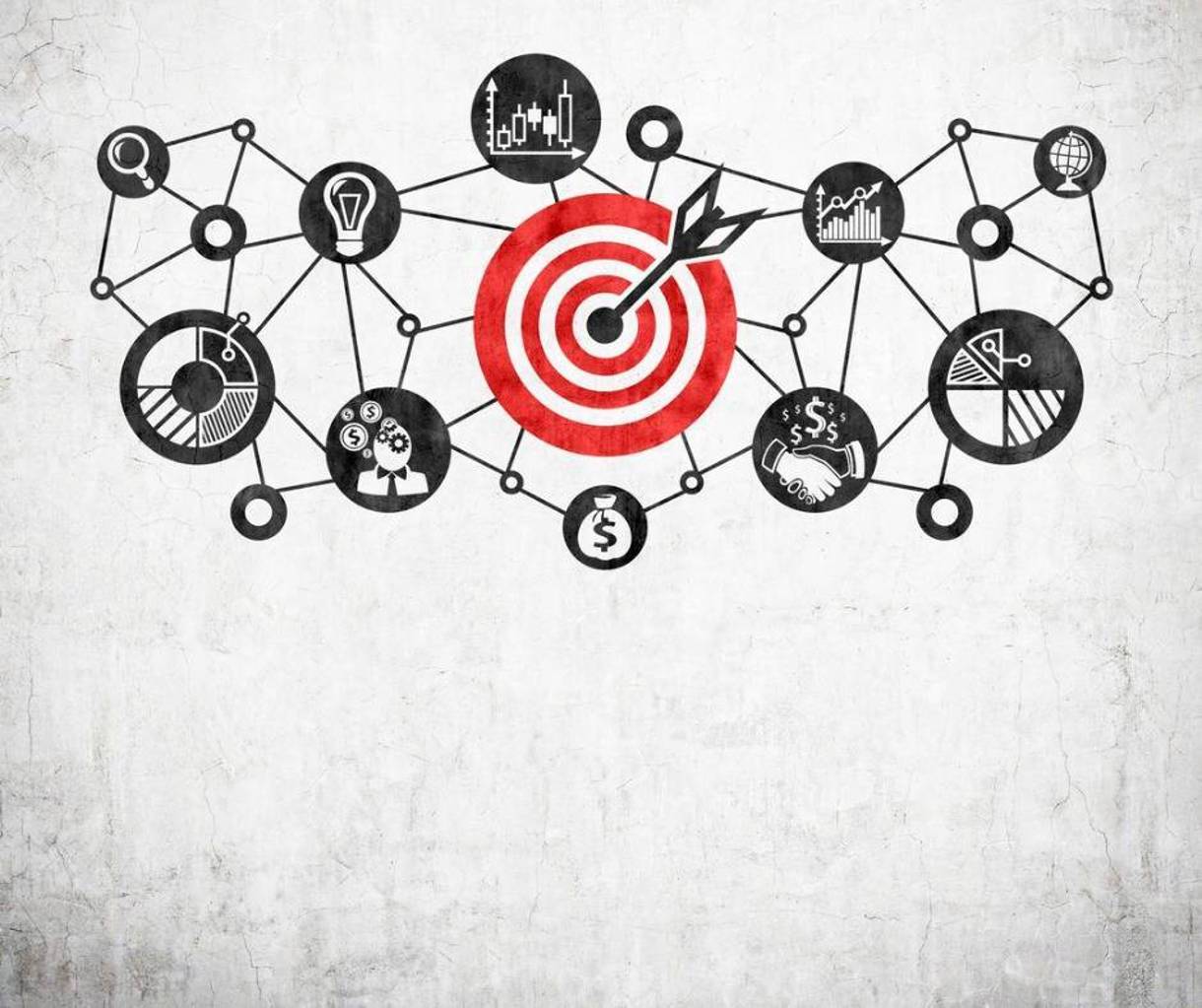

Digital Marketing Personalization Best Practices
We are currently living in the age of big data. Studies have shown that 90% of all the data in the history of the world has been created within the last two years. In fact, over 2.5 quintillion bytes of data are collected each and every day. Data can be classified into a couple of different types. It can be quantitative, consisting of facts, figures, and statistics. It can also be qualitative, giving descriptive information on a subject. Whether quantitative or qualitative, data is essentially a collection of facts gathered and presented for the purpose of decision-making. But, in the digital landscape, what kind of data is being collected?
From the moment we go online, our computer is giving out data in the form of our personal information. The browser itself gives out this information. Beginning with the user's IP address, the browser will send out a user's system information. The OS, the hardware specs of the machine, the user's ISP, browser version, active plug-ins, and social media accounts are bits of data that are commonly given out. The sites we visit digest this data in the form of cookies which the sites themselves deposit into our machines upon our first visit.
There are different types of cookies that can be placed into our machines. Session cookies and permanent cookies are installed by the sites we visit. Session cookies record activity during a browsing session and cease functioning when we close the browser. They are the reason why we can still find items in our shopping cart when we return to an e-commerce website.
Another type of cookie is known as permanent cookies. These cookies last longer and perform functions like remembering our login credentials. The next type of cookie is known as third-party cookies, which are commonly used to track your browsing activities. These cookies are installed by outside sites, and the data is often sold to marketing companies. Online searches and purchases, likes and dislikes on Facebook, and favorite YouTube channels are all tracked. Even personal information, such as your birthday, is entered into social media platforms and ends up recorded in the form of cookies. It's not just cookies, however, that supply your browser all of this data. Studies have shown that nearly three quarters of smartphone apps regularly collect personal information, which is then reported to third party tracking companies.
Why do businesses use your data for targeting?
With all of this information at our fingertips, it’s little wonder why data is the driving force in the world of digital marketing. As marketers, we use the data culled from analytics tools, cookies, apps, browser histories, and IP locations to build individual customer profiles for website personalization, which are tailored to each individual user. This not only allows us to provide the user a richer, more personal user experience, but it enables our clients to more effectively target their ad spend. A recent study found that consumer engagement increased three-fold when using personalized ads versus a traditional display ad format. What makes this type of targeting so effective for businesses?
Over recent years, consumers have been inundated with online ads to the point that it has created a phenomenon known as "banner blindness.” Banner blindness is what happens when consumers, either consciously or unconsciously, ignore banners and ads which may come across as too aggressive. This phenomenon creates an issue for the marketer on how to get their message in front of the intended consumer. This is where personalization comes into play. We are able to build customer profiles and target ads to individual customers based on their own interests. Ads and content which are personalized to the consumer increase relevance to potential buyers. This gives businesses higher user engagement, which ultimately leads to higher Click-Through-Rate (CTR), lower Cost-Per-Acquisition (CPA), Cost-Per-Click (CPC), and a higher Return-On-Investment (ROI). Obviously, the development of personalized marketing has been beneficial to business, but what does it mean for the average consumer?
What does personalization mean to consumers?
Although things like banner blindness exist, personalization cuts through a lot of that haze. Studies have shown that 74% of consumers are concerned over how their personal information is used. However, studies have also found that the same percentage of consumers are disappointed when they land on sites that appear to have little to do with their interests. Why? No one wants to feel like a number. We all want to feel special and personalization gives people that feeling. In fact, it’s been found that 31% of customers would like their experience to be more personalized. Personalization provides consumers with relevant ads and content, based upon their personal likes and behavior. It enhances their online experience.
Where does personalization occur?
Personalization is already prevalent across the internet and it's growing. You can commonly find it in the form of advertisements. For example, while preparing this blog post, I performed a good number of searches on personalization. Now, when I go to sites like an online character counter, I am served with ads for companies that offer personalized marketing services. Personalization is found in location-based marketing, which targets consumers within a specified geographic area. We can define this from a global scale down to the level of urban neighborhoods. In email marketing, personalization has been shown to increase open rates on emails by 50%. Some studies have shown that the conversion rates from these personalized emails increased by over 300%.
Even websites are being personalized now. Companies are building different versions of the homepage around the likes and personalities of user profiles. Amazon has done a tremendous job of personalizing their site. For example, when I log onto Amazon, it knows where my interests lie and displays relevant content that is of interest to me. Nearly 20 years ago, Jeff Bezos, founder of Amazon, was quoted in a Washington Post article saying, "If we have 4.5 million customers, we shouldn’t have one store. We should have 4.5 million stores.” That is the whole point of personalization in a nutshell.
Amazon often advertises directly to the consumer through personalization.

What are some types of personalization?
As we mentioned earlier, personalization comes from mountains of data compiled from consumer online activity. Here are some common types of personalization:
Professional/Work-Related Personalization
This type of personalization uses data collected from such sites as LinkedIn and other social media to deliver the user a message which is relevant to the user's profession.
Demographic personalization
Used well before the birth of the internet, this form of personalization utilizes data such as age, gender, location, and even socio-economic status to deliver relevant content.
Personalization through browsing behavior
The delivery of targeted, relevant ads is crucial to this type of personalization. Online searches and purchases help to paint a picture of consumer likes, dislikes, and interests.
Psychographic personalization
This type of personalization encompasses a wide range of data compiled from virtually all sources available; social media likes, professional associations, browsing behavior, and demographics. From this data, psych profiles on individual consumers and consumer groups can be built. Marketers evaluate things like consumers who are more likely to use coupons or, consumers who have in interest in pop-culture. This enables marketers to deliver even more relevant content, specifically targeted toward the individual consumer.
The future of personalization is now
Personalization can be highly effective, and the information is readily available. We put it out there from the moment we log on to our computers. We collect it in our analytics reports. Because of this readily available information, businesses are buying data from third-party vendors (remember the third-party cookies). Typical sign-up sheets share data with other sites and networked organizations. Then, there are the obvious data mining techniques, such as sites requiring a phone number for an account or mobile app that requires permission to view the consumer's contact lists, photos, media, etc. Researchers are even looking into psychological traits like aggression or passivity from the way users play games online.
Personalization isn't just the next wave of the future. The future is now and it’s growing exponentially because of its effectiveness. Consumers are happier with personalized content and businesses are enjoying the benefits of that happiness with higher CTR and increased conversions. For business though, the question still remains about the corporate comfort level of being totally transparent. How comfortable would a business be in letting the consumer know what personal information is being collected, how it is collected, and what is done with the information? Remember that although 74% of consumers like personalization and feel disappointment when the site content is not personalized, the same amount of consumers are concerned over what happens with their personal data.

With this thought in mind, we’ve compiled a list of best practices for personalized, targeted marketing.
1) Understand your customer
Understanding customers means taking a deeper look at their demographics, online behavior, and personality. It means knowing who they are, what they are looking for, and then delivering it. This is personalization.
2) Privacy Statement
Include an easily-recognized statement on the company's privacy policies, stating to the consumer what information is collected, and how it will be used. This is already commonplace for email opt-ins, and it provides the consumer a measure of assurance that their information is being properly cared for.
3) Real-Time Decision Making
Utilize consumer data while customers are active on the site. This enables you to deliver the right message at the right time, before they move on to another site.
4) Proper Channel
Not all channels function equally in all situations. Knowing your customer profile and where to deliver the message is essential. Many companies simply rely on email marketing when oftentimes they would be better served running paid ads, or delivering personalized content on their site. The right message, at the right time, over the right channel is key.
5) Pay Attention to Your Customers
Consumers constantly give off signals, or buying signs, from their online actions. Monitoring these signals in real-time gives marketers the ability to deliver the proper message at the right time.
Personalization outlook
Personalization has proven to be effective and mutually beneficial for both the consumer and the business. The consumer's experience has been enriched and is most often appreciated. The appreciation is shown through higher CTR and ROI, which boosts the bottom line for businesses.
If you would like to know more about how personalization can help drive your online sales, drop us a line. We'd love to talk more about how we can personalize your marketing efforts.




